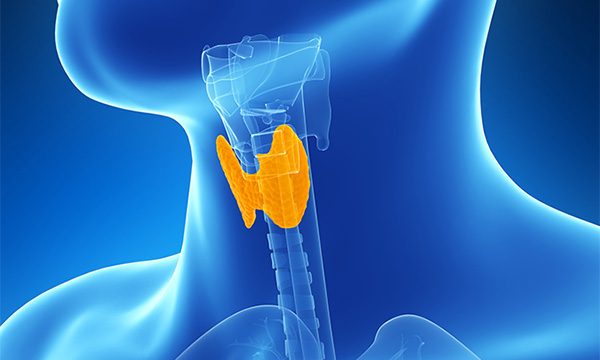
Often, thyroid cancers are small and do not turn out to be serious. But if surgery takes place on a higher-risk tumor, monitoring levels of the thyroglobulin protein for 6 to 12 months may be necessary.
For a small gland at the base of the throat, the thyroid is much-discussed. It is a busy little gland, containing hormones that control the heart rate, body temperature, amount of calcium in the blood, and metabolism. This is your mighty thyroid.
Should we keep alert about the gland? Diagnoses of thyroid cancer have increased in recent decades too. While many of these cases can be explained by improved detection methods, not all can. Thyroid cancer is the eighth most common cancer type in the United States, making up nearly 4 percent of all new cancer cases, according to the National Cancer Institute (NCI).
In many cases, thyroid cancers—sometimes presenting as a lump or mass within the thyroid or neck—are found during imaging of the neck for other health problems. Symptoms may include voice changes, neck pain and difficulty swallowing.
That said, survival rates for thyroid cancer are very high. Out of every 100 people diagnosed, 98 will still be alive five years after being diagnosed. Also, 7 out of 10 patients are diagnosed before the cancer spreads outside of the thyroid, says the NCI.
What to Look For
In many cases, thyroid cancers—sometimes presenting as a lump or mass within the thyroid or neck—are found during imaging of the neck for other health problems. Symptoms may include voice changes, neck pain, and difficulty swallowing.
It doesn’t hurt to keep in mind a few risk factors. Those include prior exposure to radiation (particularly during childhood), thyroid-cancer family history, age, being a woman, and certain genetic syndromes.
Routine screening is not recommended for thyroid cancer, but there are exceptions. For instance, if a patient has a family history of the type called medullary thyroid cancer, they should let their physician know and possibly undergo genetic screening to learn whether they have a gene that makes thyroid cancer more likely. If the gene is found, surgery to remove the thyroid often takes care of the problem.
Monitoring Any Follow-Up Cases
In many cases, thyroid cancers are small and do not turn out to be serious. “It is the most overdiagnosed cancer at this time,” says Devaprabu Abraham, MD, a medical director of the Endocrine Head and Neck Tumor Program, Huntsman Cancer Institute at the University of Utah.
But if a tumor turns out to be considered intermediate to high-risk, and surgery takes place, monitoring levels of the thyroglobulin protein for 6 to 12 months may be necessary, says Abraham.
Because only the thyroid produces thyroglobulin, it is a very specific marker for thyroid cancer presence or recurrence, notes Joely Straseski, PhD, a medical director of Endocrinology and co-medical director of the Core Laboratory at ARUP. Such monitoring is done by taking a blood sample, and ARUP Laboratories has several tests that can detect the presence of thyroglobulin.
Catherine Arnold, Science Communications Writer
















